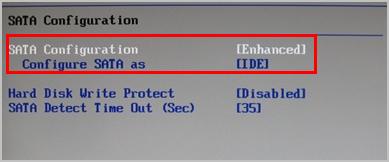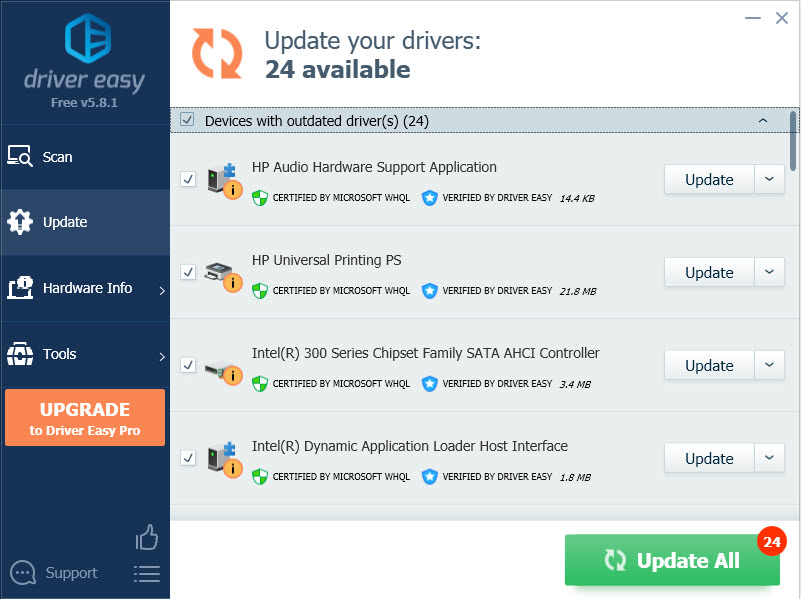If you can’t see your SSD while on the BIOS setup screen, don’t worry. There are workarounds to fix BIOS not detecting SSD issue in your Windows computer.
The reasons why your SSD is not detected by BIOS are your SATA driver issue or your BIOS setting problems. Either case, you can fix it if your BIOS doesn’t recognize your SSD.
Try these fixes
Here are some solutions you can try. You don’t have to try them all; just work your way down the list until everything’s working again.
Solution 1: Troubleshoot hardware faulty
The hardware faulty can prevent your SSD from being detected by BIOS. So you should check your SSD hardware and the corresponding ports, and make sure they are working properly.
In addition, you can switch to another SSD port and see if it can be detected by BIOS.
If the hardware works great and you’re having the problem, don’t worry. Move on to the next solution.
Solution 2: Configure the SSD settings in BIOS
It’s likely that SATA controller mode is not set correctly and that’s why your SSD is not recognized by BIOS. So you can configure the SATA controller settings in BIOS.
Since the steps to configure BIOS are different due to the brands, so here we take Lenovo laptops as an example.
- Restart your computer, and press the F2 key after the first screen.
- Press the Enter key to enter Config.
- Select Serial ATA and press Enter.
- Then you’ll see SATA Controller Mode Option. Choose the IDE Compatibility Mode.

- Save your changes and restart your computer to enter BIOS.
Now BIOS should be able to detect your SSD.
Solution 3: Update available drivers
A missing or outdated device driver in your computer can cause your SSD not detected by BIOS, especially your SSD driver and motherboard driver. So you should keep your device drivers up to date.
There are two ways to update your device drivers: manually and automatically.
Manual driver update – You can go to the manufacturer’s website, find your hardware device driver and download the latest version. Then manually install it in your computer. Be sure to download the one that is compatible with your Windows OS. This requires time and computer skills.
Automatic driver update – If you don’t have the time or patience, you can do it automatically with Driver Easy.
Driver Easy will automatically recognize your system and find the correct drivers for it. You don’t need to know exactly what system your computer is running, you don’t need to risk downloading and installing the wrong driver, and you don’t need to worry about making a mistake when installing.
You can update your drivers automatically with either the FREE or the Pro version. But with the Pro version it takes only 2 clicks (and you’ll get full support and 30-day money back guarantee):
- Download and install Driver Easy.
- Open Driver Easy and click Scan Now. Driver Easy will then scan the problem drivers in your computer.

- Click the Update button next to the flagged device to automatically download the correct version of their driver (you can do this with the FREE version). Then install it in your computer.
Or click Update All to automatically download and install the correct version of all the drivers that are missing or out of date on your system (this requires the Pro version – you’ll be prompted to upgrade when you click Update All).

- Restart your computer to take effect.
Enter BIOS and see if BIOS detects your SSD.
So that’s it. Hope this post fixes your BIOS not detecting SSD issue. If you have any questions or suggestions, feel free to leave a comment below.





